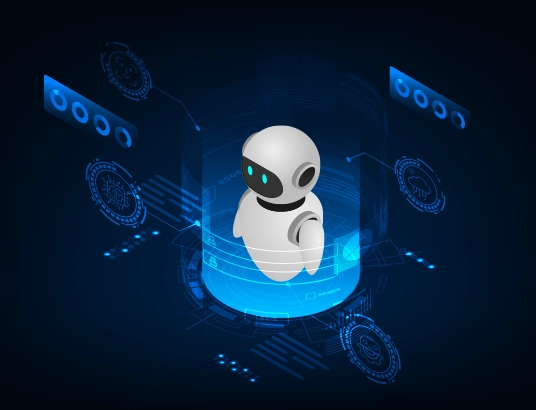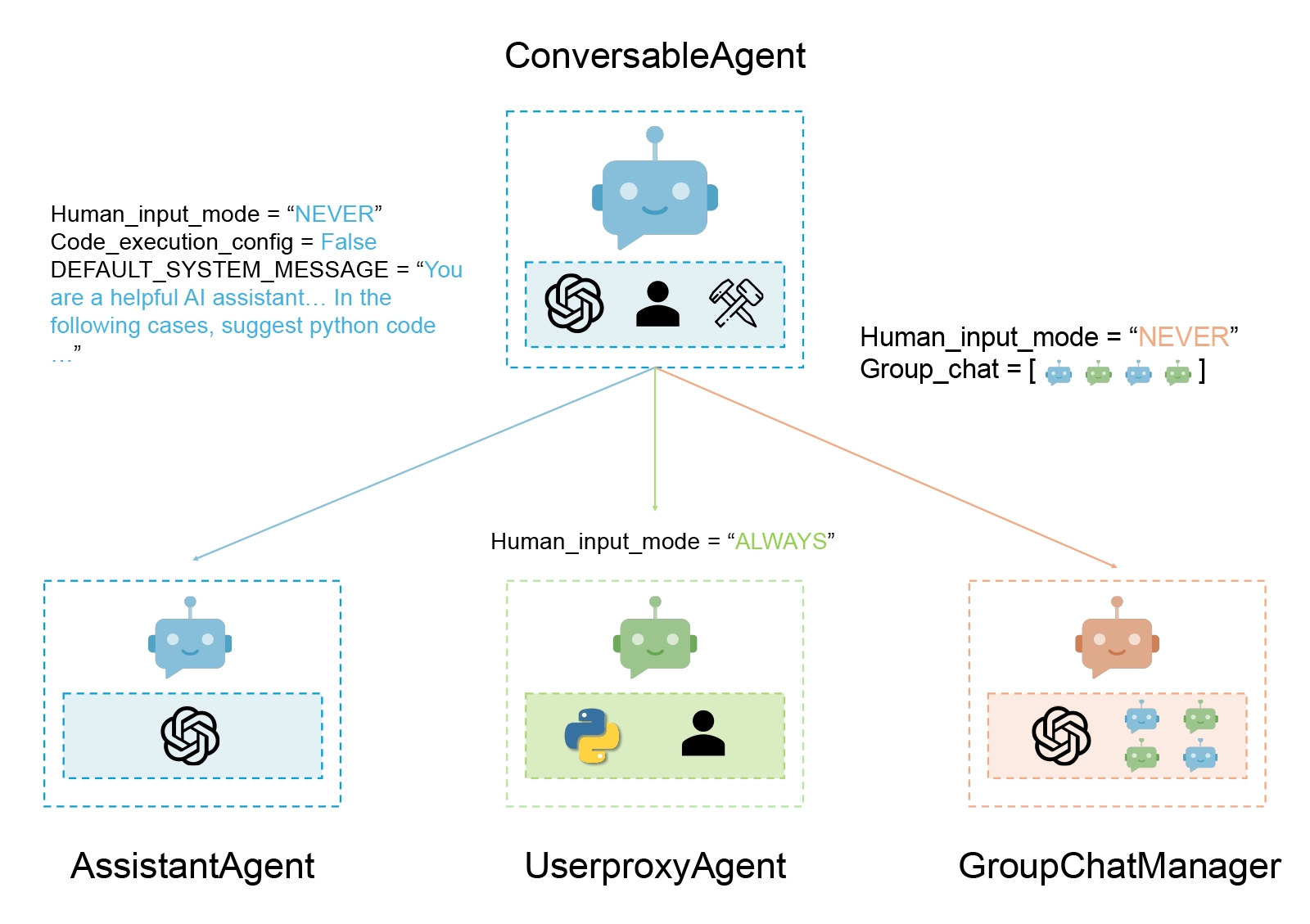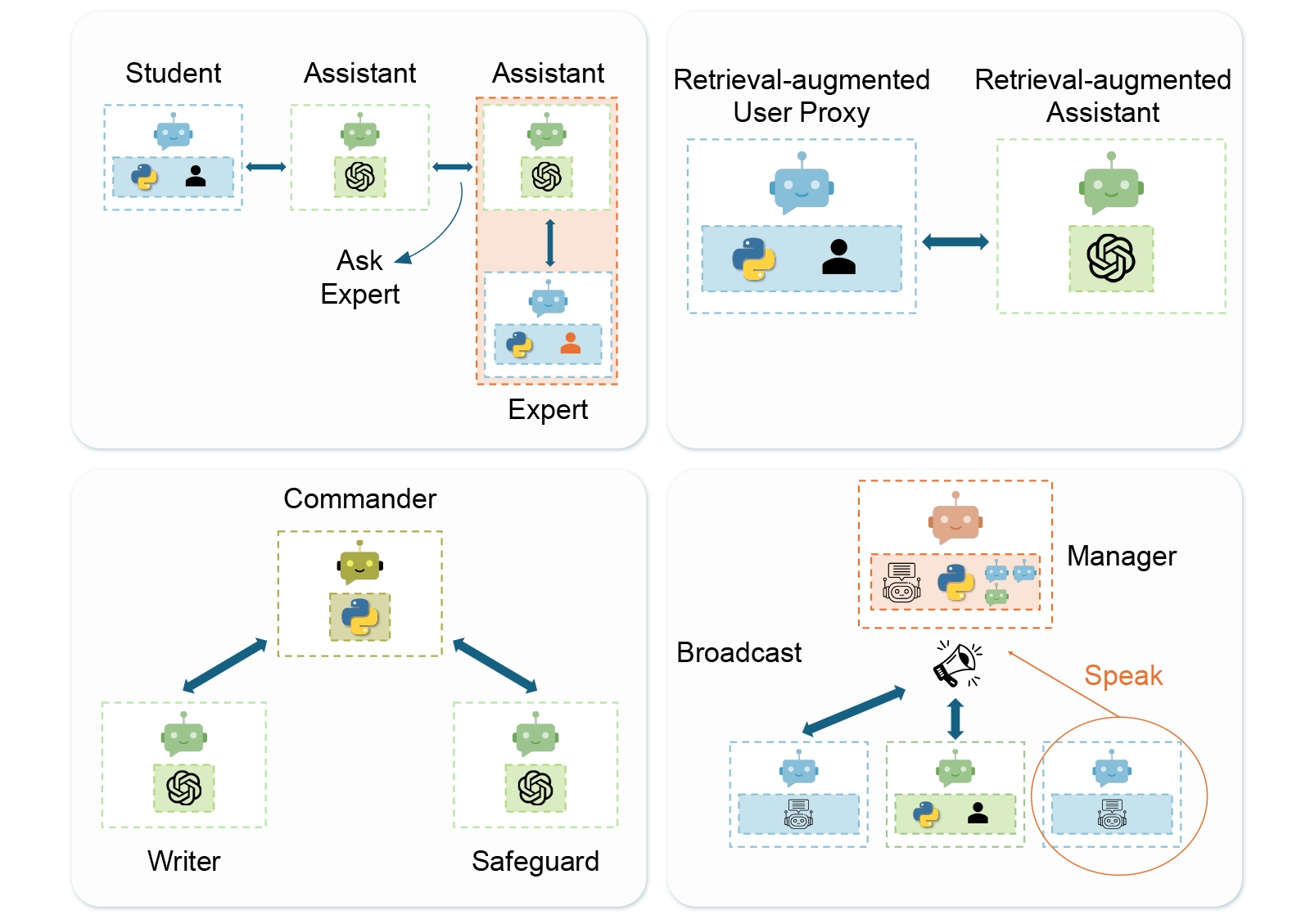- Posted on : January 20, 2025
-
- Industry : Corporate
- Studio : Data & AI
- Type: Blog

AutoGen expands what’s possible in developing next-gen AI applications. It is already being used to automate customer support by enabling agents to handle queries and issues autonomously, and to support collaborative research environments by enabling multiple agents to contribute to complex problem-solving tasks.
This framework for building and managing multi-agent systems can integrate large language models (LLM), tools, and human input. It can also support diverse conversation patterns, so teams can use it to create sophisticated AI systems that can tackle complex tasks with minimal effort.
The Agentic Framework by AutoGen provides structured, goal-oriented, autonomous agent systems that can deliver measurable value in various business scenarios, including:
- Enhanced Efficiency Through Automation: The framework enables autonomous agents to perform complex tasks with minimal human intervention. This reduces the time spent on repetitive tasks, leading to increased productivity and faster project completion times.
- Improved Decision-Making: By leveraging AI-driven insights, the framework allows agents to make informed decisions based on real-time data. This leads to more accurate outcomes and a higher success rate in task execution.
- Scalability and Flexibility: Businesses can deploy agentic frameworks across various use cases and industries. Whether managing supply chains or streamlining customer support, the framework scales effortlessly, adapting to unique business needs.
- Cost Optimization: Automating workflows and reducing manual errors lowers operational costs. The framework optimizes resource allocation and eliminates redundancies, contributing to better financial efficiency.
- Enhanced Customer Experience: Agents powered by the framework can engage with customers more effectively by understanding their needs and preferences, offering personalized solutions, and ensuring consistent support across touchpoints.
Introduction to the AutoGen Framework
AutoGen offers a unified multi-agent conversation framework that provides a high-level abstraction for utilizing foundation models. This framework integrates LLMs, tools, and human input via automated agent chat, which enables teams to create capable, customizable, conversable agents. These agents can then perform tasks autonomously or with human feedback, including those that require tool usage through code.
Autogen can also automate chat among multiple agents, which simplifies the orchestration, automation, and optimization of complex LLM workflows, maximizing their performance and addressing inherent limitations like hallucinations and unstable responses.
Implementing Agentic Design Patterns
AutoGen enables the implementation of agentic design patterns that are crucial for building sophisticated AI systems, including:
- Reflection involves agents reflecting on their actions and outcomes to improve their performance.
- Agents can accomplish tasks by using external tools, such as using a Python interpreter to execute code or access a database to retrieve information.
- In planning, agents create and follow plans to achieve specific goals. They can also adjust plans based on feedback and changing conditions.
- Multi-agent Collaboration leverages the collective capabilities and knowledge of multiple agents to accomplish complex tasks.
Multi-agent Conversation Framework
AutoGen’s framework serves as a high-level abstraction for managing multi-agent interactions in which agents can initiate and continue conversations by sending and receiving messages.
The ConversableAgent class is a generic agent that can converse with other agents to jointly complete tasks. It encompasses two representative subclasses, AssistantAgent and UserProxyAgent.
- AssistantAgent: Designed to act as an AI assistant, this agent uses LLMs by default and can write Python code to solve tasks. It can also receive execution results and suggest corrections or bug fixes.
- UserProxyAgent: This agent serves as a proxy for human users, soliciting human input and executing code as needed. It can automatically execute code when no human input is provided and generate LLM-based responses if configured.

Exhibit: Built-in agents in AutoGen
Example of Agent Interaction
Consider a scenario where we create an AssistantAgent named "assistant" and a UserProxyAgent named "user_proxy". These agents can be employed to solve a task collaboratively. Here's how a basic interaction might unfold:
- The user_proxy initiates a chat with the assistant, sending a message containing the task description.
- The assistant writes Python code to address the task and sends the response to the user_proxy.
- The user_proxy either solicits human input or executes the code automatically if no input is provided.
- The assistant generates a further response based on the code execution results.
- This process repeats until the task is completed.
Diverse Conversation Patterns
AutoGen also supports fully autonomous interactions, human-in-the-loop problem-solving, and other conversation patterns. These can include static conversations with predefined topologies or conversations that adapt to the interaction flow dynamically.
For example, in dynamic group chats, a manager agent can broadcast messages and determine the next speaker, while hierarchical chat patterns enable structured, multi-level interactions.
AutoGen can also support LLM-based function calls, where the LLM decides whether a specific function should be invoked during the conversation. This facilitates dynamic multi-agent interactions, such as automatically seeking expertise for challenging tasks.
Diverse Applications Implemented with AutoGen
The figure below shows four examples of applications built using AutoGen.

Conclusion
AutoGen stands out as a pioneering framework for building and managing multi-agent systems. Its ability to integrate LLMs, tools, and human input, along with its support for diverse conversation patterns, makes it an invaluable tool for developing next-generation AI applications. By leveraging agentic design patterns such as Reflection, Tool Use, Planning, and Multi-agent Collaboration, AutoGen enables the creation of sophisticated AI systems capable of tackling complex tasks with minimal effort. As we continue to explore the potential of AI, frameworks like AutoGen will play a crucial role in pushing the boundaries of what is possible.
For Further Reading
- AutoGen: Enabling Next-Gen LLM Applications via Multi-Agent Conversation Framework.
Qingyun Wu, Gagan Bansal, Jieyu Zhang, Yiran Wu, Shaokun Zhang, Erkang Zhu, Beibin Li, Li Jiang, Xiaoyun Zhang and Chi Wang. ArXiv 2023. - An Empirical Study on Challenging Math Problem Solving with GPT-4.
Yiran Wu, Feiran Jia, Shaokun Zhang, Hangyu Li, Erkang Zhu, Yue Wang, Yin Tat Lee, Richard Peng, Qingyun Wu, Chi Wang. ArXiv preprint arXiv:2306.01337 (2023).






